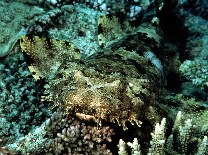| Family: |
Orectolobidae (Carpet or nurse sharks) |
| Max. size: |
290 cm TL (male/unsexed) |
| Environment: |
reef-associated; marine; depth range 0 - 100 m |
| Distribution: |
Southwest Pacific: east Australia and southern Papua New Guinea. |
| Diagnosis: |
Dorsal spines (total): 0-0; Dorsal soft rays (total): 0-0; Anal spines: 0-0; Anal soft rays: 0-0. Back with light areas between dark saddles marked with dark, light-centered blotches and spots, not reticulated lines (Ref. 13577). Caudal fin with its upper lobe hardly elevated above the body axis, with a strong terminal lobe and subterminal notch but no ventral lobe (Ref. 13577). |
| Biology: |
A common bottom shark of inshore continental waters, on algal-covered rocky areas and coral reefs (Ref. 247). Nocturnal, resting on the bottom during the day and prowling on its reef habitat at night (Ref. 247). Presumably feeding on bottom invertebrates and fishes but diet unrecorded (Ref. 13577). Ovoviviparous (Ref. 50449). Attacks waders and fishers in tide pools (Ref. 247). Interest to fisheries limited; its skin very tough and attractively patterned and utilized for leather (Ref. 13577). |
| IUCN Red List Status: |
Least Concern (LC); Date assessed: 20 February 2015 Ref. (130435)
|
| Threat to humans: |
traumatogenic |
Source and more info: www.fishbase.org. For personal, classroom, and other internal use only. Not for publication.

